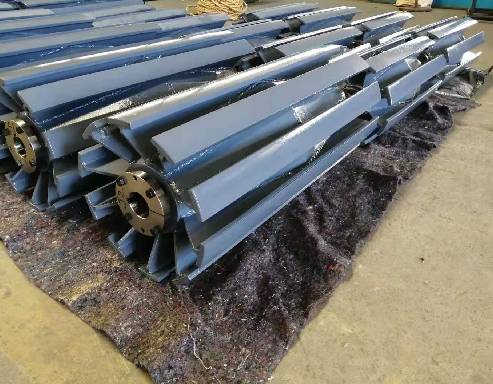 Afrikaans
Afrikaans  Albanian
Albanian  Amharic
Amharic  Arabic
Arabic  Armenian
Armenian  Azerbaijani
Azerbaijani  Basque
Basque  Belarusian
Belarusian  Bengali
Bengali  Bosnian
Bosnian  Bulgarian
Bulgarian  Catalan
Catalan  Cebuano
Cebuano  Corsican
Corsican  Croatian
Croatian  Czech
Czech  Danish
Danish  Dutch
Dutch  English
English  Esperanto
Esperanto  Estonian
Estonian  Finnish
Finnish  French
French  Frisian
Frisian  Galician
Galician  Georgian
Georgian  German
German  Greek
Greek  Gujarati
Gujarati  Haitian Creole
Haitian Creole  hausa
hausa  hawaiian
hawaiian  Hebrew
Hebrew  Hindi
Hindi  Miao
Miao  Hungarian
Hungarian  Icelandic
Icelandic  igbo
igbo  Indonesian
Indonesian  irish
irish  Italian
Italian  Japanese
Japanese  Javanese
Javanese  Kannada
Kannada  kazakh
kazakh  Khmer
Khmer  Rwandese
Rwandese  Korean
Korean  Kurdish
Kurdish  Kyrgyz
Kyrgyz  Lao
Lao  Latin
Latin  Latvian
Latvian  Lithuanian
Lithuanian  Luxembourgish
Luxembourgish  Macedonian
Macedonian  Malgashi
Malgashi  Malay
Malay  Malayalam
Malayalam  Maltese
Maltese  Maori
Maori  Marathi
Marathi  Mongolian
Mongolian  Myanmar
Myanmar  Nepali
Nepali  Norwegian
Norwegian  Norwegian
Norwegian  Occitan
Occitan  Pashto
Pashto  Persian
Persian  Polish
Polish  Portuguese
Portuguese  Punjabi
Punjabi  Romanian
Romanian  Russian
Russian  Samoan
Samoan  Scottish Gaelic
Scottish Gaelic  Serbian
Serbian  Sesotho
Sesotho  Shona
Shona  Sindhi
Sindhi  Sinhala
Sinhala  Slovak
Slovak  Slovenian
Slovenian  Somali
Somali  Spanish
Spanish  Sundanese
Sundanese  Swahili
Swahili  Swedish
Swedish  Tagalog
Tagalog  Tajik
Tajik  Tamil
Tamil  Tatar
Tatar  Telugu
Telugu  Thai
Thai  Turkish
Turkish  Turkmen
Turkmen  Ukrainian
Ukrainian  Urdu
Urdu  Uighur
Uighur  Uzbek
Uzbek  Vietnamese
Vietnamese  Welsh
Welsh  Bantu
Bantu  Yiddish
Yiddish  Yoruba
Yoruba  Zulu
Zulu conveyor pulley parts
Understanding Conveyor Pulley Parts Essential Components for Efficient Material Handling
Conveyor systems are integral to modern industrial processes, facilitating the efficient movement of materials across various sectors, from manufacturing to logistics. At the heart of these systems lies the conveyor pulley, a crucial component that plays a significant role in the overall performance and reliability of the conveyor system. Understanding the parts of a conveyor pulley can enhance maintenance practices, improve operational efficiency, and extend the life of the equipment.
A typical conveyor pulley consists of several key parts, each contributing to its functionality
. The primary components include the shell, end caps, shaft, bearings, and other accessories.1. Shell The shell is the main body of the pulley, usually cylinder-shaped. It is designed to support the weight of the conveyor belt and the materials it carries. Made from various materials, such as steel or aluminum, the shell must be robust enough to withstand the wear and tear from constant use. The shell’s surface may also be coated with rubber or other materials to provide better grip and reduce slippage.
2. End Caps These are crucial for securing the shell to the shaft while preventing debris from entering the pulley system. End caps can be welded or bolted to the shell and are often designed to enable easy access for maintenance. Proper sealing is vital to prolong the life of the pulley by keeping contaminants out.
conveyor pulley parts

3. Shaft The shaft is the core support of the pulley, connecting the shell to the drive mechanism. It is essential for the operational integrity of the pulley, as it transfers power and rotational motion. Choosing the right shaft material and diameter is critical to ensure it can handle the torque and forces exerted during operation.
4. Bearings Bearings allow for smooth rotation of the pulley around the shaft. They reduce friction, thereby enhancing the efficiency of the conveyor system. Regular maintenance and replacement of bearings are essential to prevent operational failures and ensure longevity.
5. Accessories Conveyor pulleys may include additional components like lagging, which enhances belt traction, and various types of pulley frames, which provide structural support and alignment.
In conclusion, understanding the various parts of a conveyor pulley not only aids in the selection and maintenance of the equipment but also optimizes the entire conveyor system's performance. Properly functioning pulleys ensure that materials are transported efficiently, thereby boosting productivity in industrial applications. Investing time in learning about these essential components can yield significant returns in operational efficiency and equipment longevity.
-
Revolutionizing Conveyor Reliability with Advanced Rubber Lagging PulleysNewsJul.22,2025
-
Powering Precision and Durability with Expert Manufacturers of Conveyor ComponentsNewsJul.22,2025
-
Optimizing Conveyor Systems with Advanced Conveyor AccessoriesNewsJul.22,2025
-
Maximize Conveyor Efficiency with Quality Conveyor Idler PulleysNewsJul.22,2025
-
Future-Proof Your Conveyor System with High-Performance Polyurethane RollerNewsJul.22,2025
-
Driving Efficiency Forward with Quality Idlers and RollersNewsJul.22,2025





























